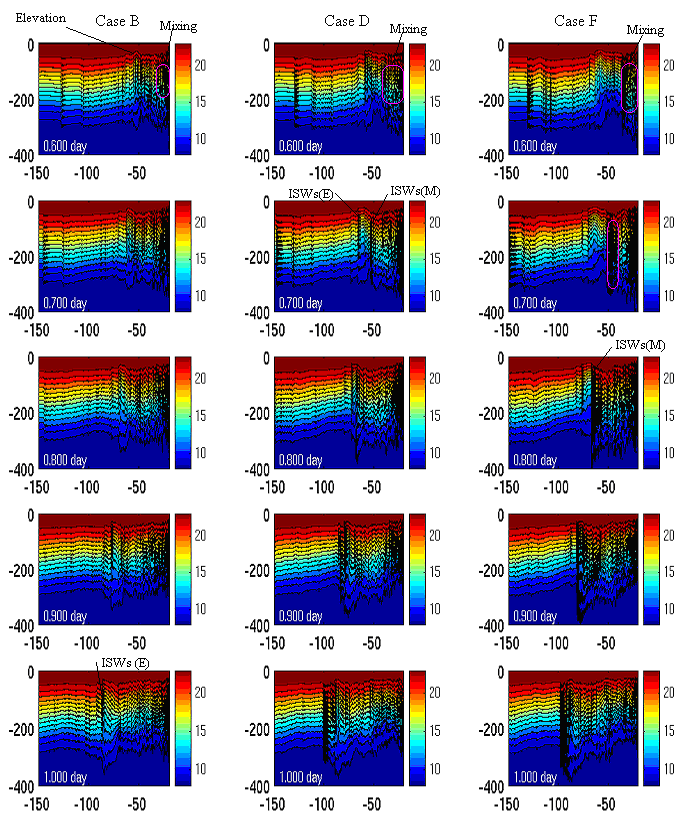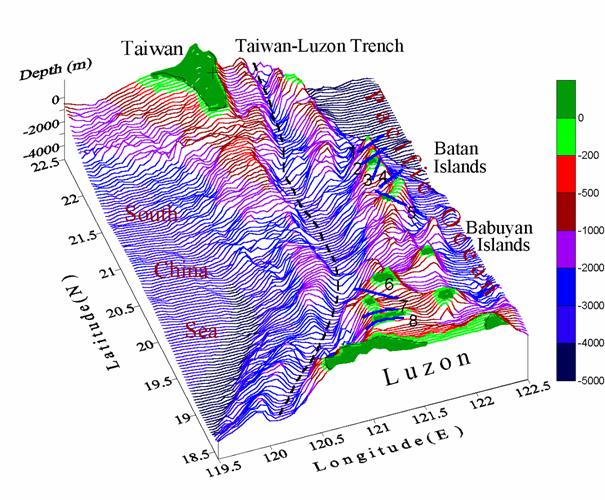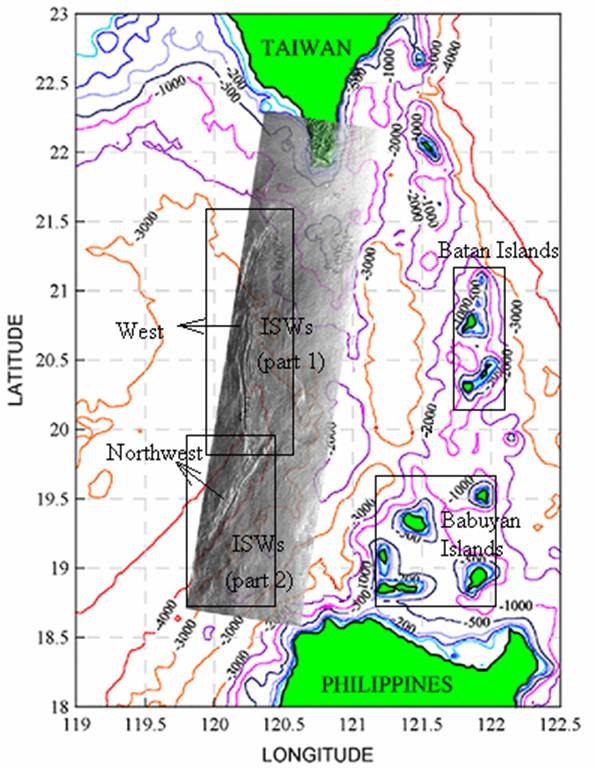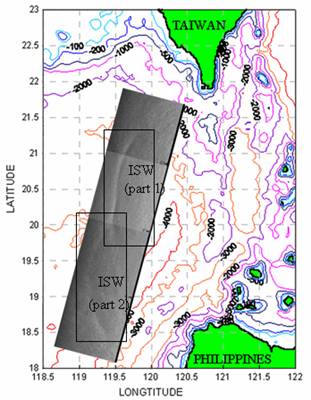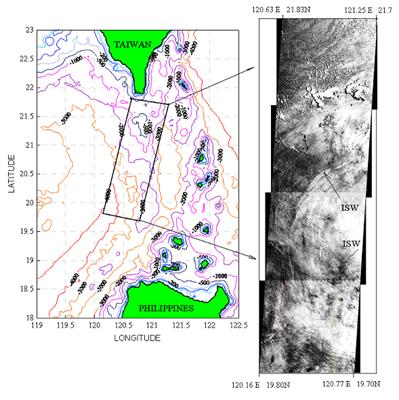| Guide for the DieCAST Ocean Model |
Investigation of the nonlinear internal wave generation in Luzon Strait (Satellite image analysis and numerical simulations)
Du, Tseng, Y.H., and Yan, X.H.(2008), 'The impacts of tidal currents and Kuroshio intrusion on the generation of nonlinear internal waves in Luzon Strait', Journal of Geophysical Research Ocean, VOL. 113, C08015, doi:10.1029/2007JC004294, 2008.
Abstract | ||||||||
|
The generation of nonlinear internal waves in Luzon Strait (LS) that propagate toward the South China Sea (SCS) is investigated under different flow conditions using numerical simulation. The flow results from tidal current and Kuroshio intrusion into LS, both of which have various strengths. As it passes through the narrow and shallow channels in the Batan and Babuyan Islands of LS, the flow reaches its maximum velocity due to the influence of local topography. When no Kuroshio intrudes into LS, a depression will be generated first by the interaction between the tidal current and local topography. Then, as the depression evolves further, a single or groups of nonlinear internal waves will be generated at the depression front as long as the tidal current is strong. These nonlinear internal waves are often called internal solitary waves (ISWs) since they, theoretically, can propagate a long distance without changing their waveforms. No ISWs will be generated when the tidal current is weak. On the other hand, when the Kuroshio intrusion is a weak current, the generation of the ISWs will be dominated by the tidal current in the same way as the case without the intrusion. However, when the Kuroshio intrusion is a strong current, the ISWs' generation will be different from the case without the intrusion. First, mixing will be generated directly by the interaction between the combined flow and local topography. Then, as it further develops, the mixing disturbs its surrounding stratified seawaters and creates groups of ISWs when the tidal current is also strong. No ISWs will be generated by the mixing when the tidal current is weak. See paper for more details. | ||||||||
Case |
case A |
case B |
case B' |
case C |
case D |
case D' |
case E |
case F |
|
Weak Tide |
Medium Tide |
Strong Tide |
|||||
Vm |
0 |
20 |
10 |
0 |
20 |
4 |
0 |
20 |
VT |
10 |
10 |
10 |
20 |
20 |
20 |
30 |
30 |
Maximum velocity |
68 |
252 |
183 |
146 |
290 |
161 |
199 |
326 |
2-D idealized topography: the initial stratification and part ofthe topography used in the simulations. The depth on top of the high seamount (the 1st seamount) is 300 m and the depth on top of the low seamount (2nd seamount) is 1300 m. The thermocline is roughly 150 m depth.
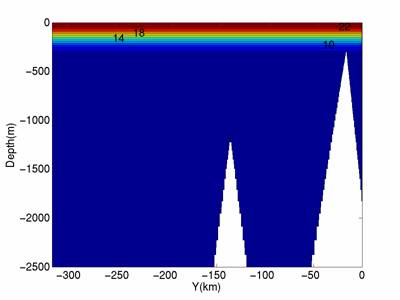
Animations can be found in case A(zoom in), case B(zoom in), case C(zoom in), case D(zoom in), case E(zoom in), case F(zoom in)
One period generation processes, in part of the simulation area, of internal solitary waves in flow conditions with only a weak (left panel), medium (middle panel), and strong tide (right panel), respectively.

One period generation processes, in part of the simulation area, of internal solitary waves in flow conditions of a weak (left panel), medium (middle panel), and strong tide (right panel) with a strong Kuroshio intrusion into Luzon Strait, respectively.
